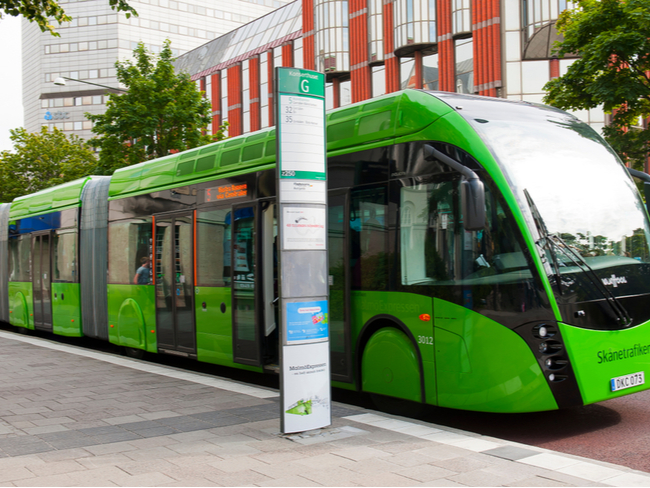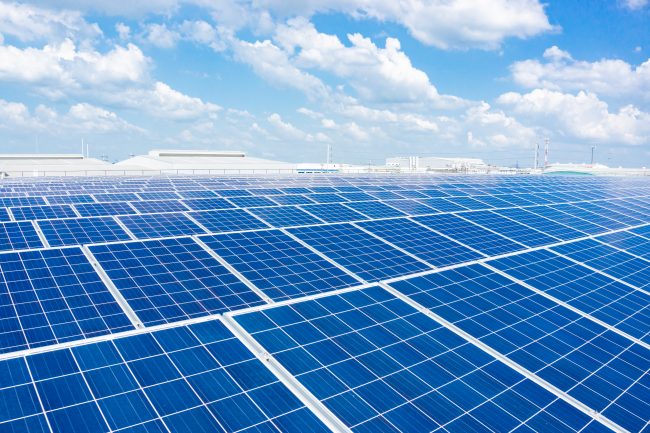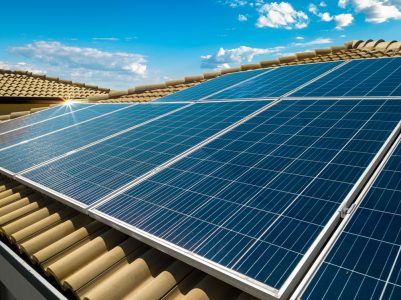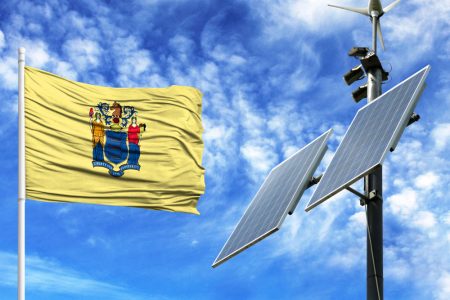
The New Jersey Clean Cities Coalition (NJCC) has reported a new initiative that could prove major for the electrification of New Jersey’s transportation infrastructure. In March 2020, New Jersey happily saw $20 million in proceeds from the Regional Greenhouse Gas Initiative (RGGI). This is the first payout since they rejoined the agreement. This initiative is the first of its kind—a mandatory, market-based program aimed to reduce greenhouse gas emissions in the US. These proceeds will not only help New Jersey reduce their emissions but trailblaze the way for new solar sectors installations, technologies, and ecological restoration projects as well as create better financing mechanisms and improve solar vehicle technologies.
According to the Strategic Funding Plan, developed by the New Jersey Department of Environmental Protection, the Board of Public Utilities, and the Economic Development Agency, 60% of funds will be allotted to the Economic Development Agency, and 40% will be split up between the Board of Public Utilities, and the New Jersey Department of Environmental Protection. The funding plan goes into further detail, outlining four main initiatives including organizing clean transportation, creating a Green Bank for the state, promoting blue carbon in the world’s coastal ocean ecosystems, and boosting forests.
As of April 17th, the New Jersey Economic Development Agency released the state’s plan of investing $80 million annually in “programs that reduce greenhouse gas emissions, drive forward projects that boost clean energy and create jobs, protect the health of residents in environmental justice communities, and increase the resiliency of coastal communities.”
New Jersey’s Climate Change Policy and 2020 Energy Master Plan
In Governor Phil Murphy’s 2020 Energy Master Plan, his administration has set a statewide goal of achieving carbon neutrality by 2050. The initiatives mentioned above were also a part of his climate change policy approach. New Jersey formally re-entered the emission trading agreement in early 2020 after two years of being on the outs. They rejoined alongside Delaware, Maryland, Connecticut, Massachusetts, Maine, Vermont, New Hampshire, New York, and Rhode Island. The state had been one of the original participants in the regional program. The proceeds from the Regional Greenhouse Gas Initiative will be used to aid the initiatives and support the goal of Governor Murphy’s 100% carbon-neutral electricity generation by 2050, with a focus on the state’s largest emitter—the transportation sector.
The state of New Jersey houses over 9 million residents, 21 counties and over 500 municipalities, making it one of the most densely populated states in the US. Out of over 6 million vehicles registered in New Jersey, almost 4 million are cars and the remaining 2 million are trucks and other commercial vehicles. With those facts and figures in place, no one is surprised by the transportation sector’s emissions, accounting for 71% of nitrogen oxide emissions and 42% in greenhouse gas emissions. Because of the location of the state, and its many roadways and waterways, there are significant transportation related challenges New Jersey will have to overcome to achieve 100% carbon-neutrality.
Emissions in EJ Communities in New Jersey
Because of location, most Environmental Justice (EJ) communities in New Jersey grapple with the transportation sector’s emissions. Oftentimes, low-income housing is located along the major road and waterways of these sectors, leading to higher rates of pollution in these areas. This causes health conditions like asthma, lung disease, and cancer for many. Governor Murphy’s Energy Master Plan takes this into account and recognizes the need to reduce the emissions from the transportation sector so the EJ communities start feeling some relief. This is where the initiatives of the RGGI Strategic Funding Plan comes into play. As stated, this plan is focused on organizing clean and stable transportation with a focus on electrification, which is echoed throughout Governor Murphy’s Energy Master Plan. Both plans highlight the need for electric vehicle (EV) charging stations at multi-family homes, hotels, and places of business as well as light-, medium-, and heavy-duty hybrid electric vehicles (HEVs) charging stations at commercial and industrial institutions.
New Jersey Department of Environmental Protection Using VW Trust
Along with the funds from the RGGI’s plan, the NJDEP aims to use the Volkswagen Diesel Emissions Environmental Mitigation Trust to help fund over $35 million worth of projects to replace old machinery and vehicles to ones that run on electricity. Additionally, the VW Mitigation Trust will assist with EV charging station infrastructure and design, allotting another $7.6 million.
Commissioner Catherine McCabe stated, “New Jersey’s transportation sector is a major source of both greenhouse gases and pollutants that threaten the health of our residents. This injection of millions of dollars will grow the clean energy economy and protect our residents against climate threats.”
Supplementary Initiatives Aimed to Electrify NJ’s Transportation Sector
Governor Murphy’s Energy Master Plan, the RGGI Funding Plan and now the VW Mitigation Trust are all huge successes in New Jersey’s move to electrify the transportation sector. Additional initiatives include:
- Increase in electric vehicle use – increased legislation and goals for more sales of public charging stations for EVs.
- Partnership to Plug In initiative – this statewide partnership aims to build out and support necessary infrastructure for EVs in New Jersey.
- It Pay$ to Plug-In Program – this program provides rebates to offset the cost of purchasing and installing EV charging stations.
- NESCAUM Statement of Intent – this understanding hopes to advance the deployment of medium- and heavy-duty hybrid electric vehicles.
While these initiatives are all strongly supported by the New Jersey Clean Cities Coalition, they have noticed none of these plans include other renewable energy sources, like natural gas, which is cheaper and more widely available. At Intersect Energy, we’re here to provide you with the most current energy news and comprehensive green solutions in our area. For all the latest solar energy happenings, be sure to follow us on LinkedIn.







 Solar contractors across nine Northeastern states added about 800 MW of small-scale installations in 2019, with New Jersey and New York making up about three-fifths of the total installed capacity. Contractors generally refer to these small scale-installations or rooftop solar panels as installations smaller than one megawatt. In 2020, The Solar Energy Industries Association (SEIA) hopes to see New Jersey and New York continuing to be trailblazers, renewing their current solar initiative plan and expanding on their current one, respectively.
Solar contractors across nine Northeastern states added about 800 MW of small-scale installations in 2019, with New Jersey and New York making up about three-fifths of the total installed capacity. Contractors generally refer to these small scale-installations or rooftop solar panels as installations smaller than one megawatt. In 2020, The Solar Energy Industries Association (SEIA) hopes to see New Jersey and New York continuing to be trailblazers, renewing their current solar initiative plan and expanding on their current one, respectively. New Jersey Governor Phil Murphy is making a pledge to fight climate change in his 290-page document that outlines the state’s master energy plan. This extensive plan includes electrification initiatives that call for more solar charging vehicles and solar heating buildings. The master plan has a goal of 17 GW of solar by 2035, and given the 3 GW of existing solar, speculations suggest that this goal can be comfortably met by adding just 950 MW of solar each year through 2035 and 400 MW of distributed energy each year through 2030.
New Jersey Governor Phil Murphy is making a pledge to fight climate change in his 290-page document that outlines the state’s master energy plan. This extensive plan includes electrification initiatives that call for more solar charging vehicles and solar heating buildings. The master plan has a goal of 17 GW of solar by 2035, and given the 3 GW of existing solar, speculations suggest that this goal can be comfortably met by adding just 950 MW of solar each year through 2035 and 400 MW of distributed energy each year through 2030. 2019 saw an abundance of clean energy dominance in the United States. From 11 states having a 100% commitment or achievement to clean energy to solar and solar battery storage prices becoming more and more affordable throughout the country, clean, renewable energy is here to stay. With that being said, we’re looking to the future. What will 2020 hold? What can we expect from clean energy in the next decade?
2019 saw an abundance of clean energy dominance in the United States. From 11 states having a 100% commitment or achievement to clean energy to solar and solar battery storage prices becoming more and more affordable throughout the country, clean, renewable energy is here to stay. With that being said, we’re looking to the future. What will 2020 hold? What can we expect from clean energy in the next decade?